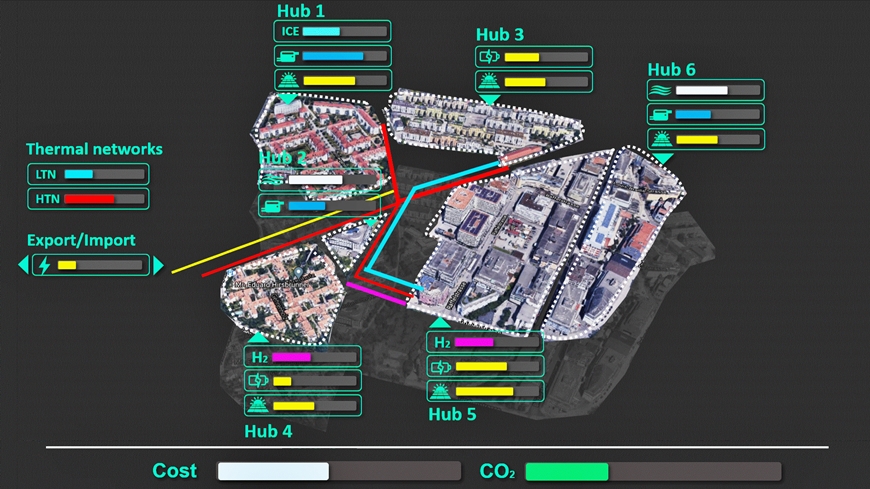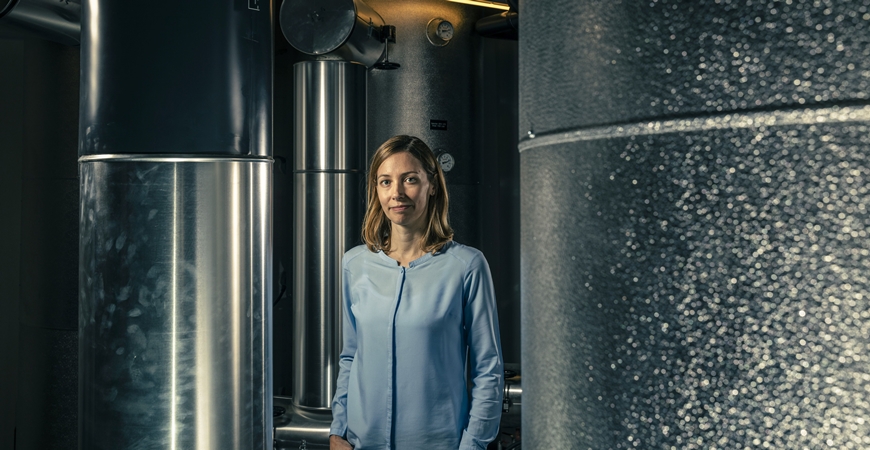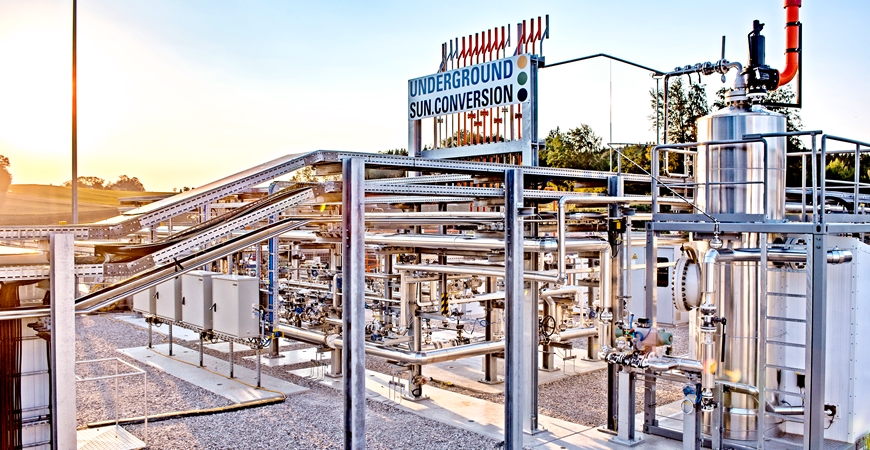Simulation
Composing new energy systems
Modern, decentralized energy systems are a highly complex matter. Planning them in an optimal and cost-efficient way is a major challenge for energy planners. Sympheny, an Empa spin-off, offers a software that helps planners to find the most suitable energy concept for a building, neighborhood or even an entire city, and thus to meet their sustainability and energy efficiency goals.

A renewable energy system is pretty much like a symphony. To achieve harmony, it takes more than just scribbling a few notes on a piece of paper. Rather, it requires an experienced composer who finds the ideal composition and determines the appropriate instruments for the piece, as well as a conductor who ensures that the individual musicians are in perfect harmony with each other. Only when everything plays together a melodious symphony takes shape. In the energy system, the role of the composer is played by energy planners. Their task is becoming increasingly complex, however, as new technologies are constantly entering the market and new requirements – for instance, with regard to sustainability and reliability – are constantly emerging.
Rethinking energy systems

This increasing complexity is mainly due to the shift from centralized to decentralized energy systems. It is driven by the transition towards a climate-friendly society. In decentralized energy systems, several buildings in a neighborhood or area are connected, sharing renewable energy and various conversion and storage technologies. The buildings, as energy prosumers, simultaneously use, store and feed-in surplus energy into the grid, for example from their photovoltaic system. They become an important instrument in the system themselves. A key advantage of decentralized energy systems over traditional, centrally organized ones is that energy can be provided closer to where it is being consumed. Transport routes are thus minimized, which in turn enables more efficient interaction between the individual energy and storage technologies.
For planners, this means that it is essential to consider energy systems as a whole, and to select the optimum solutions considering a large number of technologies and combinations thereof. Through innovation, the spectrum of available solutions expands even further. At the same time, energy planners must ensure grid stability and always keep an eye on economic efficiency. As a result, creating a melodious symphony becomes a highly complex task. One can no longer rely on the standard, well-worn pieces that dozens of orchestras have played before. A company that has recognized this problem and is providing a remedy is the Empa spin-off Sympheny. The name is no coincidence. Sympheny's aim is to ensure that the manifold energy flows on site are integrated into a harmonious whole – maximizing energy efficiency and sustainability.
A web tool to simplify energy planning
Sympheny offers planners a cloud-based tool that helps them to plan easily and cost-effectively the optimal energy system for a building, neighborhood or even a city. "Our platform takes into account a variety of factors, such as available renewable energies and suppliers on a given site, different energy demands, relevant technologies, and others. At the same time, it also considers the various goals of the planners, such as reducing CO2 emissions, increasing renewable energy use and minimizing costs," explains Andrew Bollinger, CEO of Sympheny. Based on this multitude of information, the online tool helps energy planners to quickly and effectively find the optimal energy system for the site. In doing so, it helps to answer crucial questions, such as whether photovoltaic systems should be installed on the roof or on the façade, whether and which seasonal storage units should be implemented, or how the thermal networks should be structured. Most importantly, it can help energy planners to answer these questions in combination – considering the numerous dependencies and interactions between technologies and energy flows on a given site.
Knowhow from the lab, impact on the market
The software is based on many years of research. Empa's Urban Energy Systems lab has been investigating new methods for optimizing decentralized energy systems for a number of years. The research eventually resulted in the tool, which has been steadily developed in collaboration with Empa's industry partners. Last year, the team finally decided to enter the market. Thus, the spin-off Urban Sympheny AG was founded in April 2020.
"We see great market potential for our solution, as energy planning is becoming increasingly complex. For energy planners, time is valuable, so it important to help them find the best solution as quickly as possible. Through its powerful algorithms and cloud-based workflows, Sympheny empowers planners to navigate this complexity with maximal efficiency, enabling them to make better planning decisions, more quickly than before," says Bollinger. At the same time, the software promotes the integration of sustainable and renewable energy sources. In this way, Sympheny's team wants to make a contribution to the energy transition.
A score from the real world
Joint projects with partners from industry show the great potential of Sympheny's solution. One example: Together with Empa, Sympheny helped the utility company IBC Energie Wasser Chur to find new energy concepts for neighborhoods that would enable them to reduce CO2 emissions to net zero by 2040. For this purpose, a digital model was created for the city of Chur in Sympheny's software. Sympheny's algorithms were then deployed to evaluate many possible energy concepts, calculate the cost and CO2 performance of each, and find the optimal solutions for the city. With this selection of solutions, the company can now easily find the one that enables it to achieve its net zero goal at minimum cost.
What's more, in an in-depth analysis, the project team also defined the necessary measures for each solution in order to transform the existing energy system. For IBC Energie Wasser Chur, the most interesting aspect might be that it is now possible to convert its current energy system into a CO2-free system without increasing the life cycle costs – despite the fact that high investments are required for the conversion. In the transformation process, the company also has the opportunity to recalculate each upcoming conversion step based on the latest data, for example new technologies, and to make any necessary adjustments. This further minimizes the risk for the transformation of the energy system.
Sympheny has entered the race for the "Top 100 Swiss Startup Award 2021". The award ceremony will take place on September 09 and the voting will run until July 18. Vote for Sympheny: https://www.startup.ch/Urban

Building stock
First sort, then refurbish
Switzerland's building stock is quite impressive. There are around 1.8 million buildings in the country, but only one percent of this building stock is renovated each year. In other words, it will take 100 years for the entire building stock in the country to be renovated – which would be too slow to achieve the energy transition. But before politicians decide on stimulating subsidies, this daunting task must first be structured: Which measures make sense for which buildings? And where to start?
>>>>

Energy storage
Solar energy from the deep
During the winter months, renewable energy is in short supply throughout Europe. An international project is now considering an unconventional solution: Renewable hydrogen and carbon dioxide are pumped into the ground together, where naturally occurring microorganisms convert the two substances into methane, the main component of natural gas.
>>>>

Personalized medicine
The simulated patient
Digital twins enable customized medical therapies. Empa researchers have now modeled several hundred such avatars based on real people and treated them experimentally. For the first time, the digital twins received feedback from real patients.
>>>>






